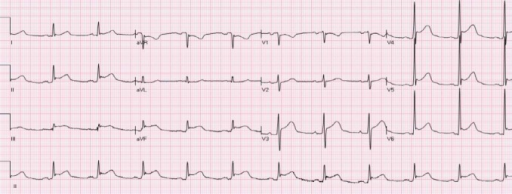Playlist
Show Playlist
Hide Playlist
Pericarditis: Epidemiology
-
Slides Pericarditis InfectiousDiseases.pdf
-
Reference List Infectious Diseases.pdf
-
Download Lecture Overview
00:01 In our discussion of cardiovascular infections, we now turn to pericarditis. Pericarditis is an inflammation of the pericardium, the covering of the heart caused by any of a wide variety of infectious and some noninfectious processes as well. The incidence in an autopsy series was found to be somewhere between 2% and 6%. So, it’s not a particularly common problem. Among infectious causes, there are essentially three main ones. These are viruses, in fact, viruses cause most pericarditis, bacteria, and fungi. Among the non-infectious causes, we have cancer which unfortunately is far too common especially carcinoma of the lung. Also, uremia which is vanishingly uncommon because patients get chronic hemodialysis in most developed countries. It’s readily available. 01:13 So, we don’t see the pericarditis we used to see in uremia. But it’s still present in connective tissue disorders such as systemic lupus erythematosus. There are other causes too. Some medications can cause for example a lupus-like syndrome. They include isoniazid, hydralazine, and procainamide. 01:44 A pulmonary embolism in part of the lung that is adjacent to the heart could cause pericarditis. 01:55 It is very common in radiation therapy for cancer involving the mediastinum and involving the lungs. 02:06 Certainly, you can have it as a result of trauma. There is a condition called Dressler's syndrome which may follow either an acute myocardial infarction or cardiac surgery where the pericardium has to be opened and rarely, aortic aneurysm. Among the viruses that are known to fairly commonly cause pericarditis, we consider coxsackievirus, one of the enteroviruses; another enterovirus, the echovirus especially type 8; and cytomegalovirus may be among the common causes in patients with AIDS. Most of them are lumped into what we call idiopathic pericarditis. 03:07 We assume that most of these are caused by viruses. Among bacteria that can cause pericarditis, most of them get there from hematogenous seeding of the pericardium, or it can get there from extension of a contiguous infection commonly pneumonia, a post-operative infection, or as a result of surgery on the pericardium as I mentioned. Then post-traumatic is another cause of a contiguous problem in the pericardium. Surprisingly, the microbiology of pericarditis hasn’t changed that much. In the pre-antibiotic era, pneumonia was very common. 04:01 Well, pneumonia due to Streptococcus pneumoniae is still very common. Streptococcus pneumoniae is still the number one cause of pneumonia. Since the pericardium is right near a potential infected part of the lung, you can see why that would still be the case. Staph aureus still is a very common problem. Mycobacterium tuberculosis unfortunately is a common problem which remains. But in the modern era, gram-negative bacilli have crept in. This is a result not only of the use of antibiotics but of surgical procedures, of hospitalization, and bacteremia due to gram-negative bacilli and surgery on the lungs which can be associated with gram-negative rod infections, et cetera. So, the modern era has gram-negative rods on the list. The early era did not. 05:09 Fungi can do it as well. Candida, here we’re showing you that classic look of candida with pseudohyphae and budding yeast nearby. We’re also showing you Histoplasma capsulatum. What you’re seeing here is a macrophage with a large nucleus that has engulfed these tiny yeasts. You have to look carefully but they are there. They’re about 3 micron or so. They’re sort of pear-shaped. They look like they have a capsule around them, that circle. These are tiny yeasts that you find as a cause of pericarditis in endemic areas like Cincinnati, Ohio, St. Louis Missouri, places in the Ohio and Mississippi River Valley.
About the Lecture
The lecture Pericarditis: Epidemiology by John Fisher, MD is from the course Cardiovascular Infections. It contains the following chapters:
- Pericarditis – Epidemiology
- Pericarditis – Etiology
Included Quiz Questions
Which of the following medications is most commonly associated with non-infectious pericarditis?
- Isoniazide
- Hydrochlorthalidone
- Amiodarone
- Beta-blockers
- Acetylcholine esterase inhibitors
Which of the following pathological conditions is an infectious condition that can potentially cause pericarditis?
- Pneumonia
- Systemic lupus erythematosus
- Connective tissue disorders
- Radiation therapy to the chest
- Aortic aneurysm
What is the most common cause of acute pericarditis?
- Viruses
- Bacteria
- Fungi
- Malignancies
- Medications
Which of the following pathogens is the most common cause of bacterial pericarditis in the developed world?
- Streptococus pneumoniae
- Mycoplasma pneumoniae
- Tuberculosis
- Enterococcus faecalis
- Pseudomonas aeruginosa
Customer reviews
5,0 of 5 stars
| 5 Stars |
|
1 |
| 4 Stars |
|
0 |
| 3 Stars |
|
0 |
| 2 Stars |
|
0 |
| 1 Star |
|
0 |
Everything explained thoroughly , it was very easy to understand , and the lecture was informational





